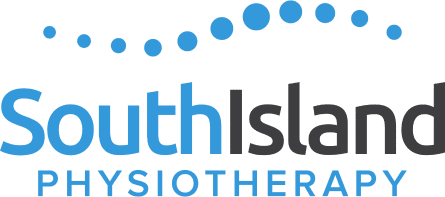Exploring Clinical Applications of Intramuscular Stimulation
Living with chronic pain can be debilitating and significantly affect one’s quality of life. Thankfully, medical advancements continue to offer innovative solutions for managing pain. Intramuscular stimulation (IMS) has emerged as a promising therapy, offering effective relief for individuals suffering from a wide range of painful conditions. In this blog post, we will explore the uses and evidence-based benefits of intramuscular stimulation for pain management.
Understanding Intramuscular Stimulation
Intramuscular stimulation, also known as dry needling, is a specialized and effective treatment technique used by physiotherapists who have undergone advanced training. IMS treatment involves inserting thin, solid acupuncture needles into specific trigger points within muscle tissue, with the aim of relieving pain and restoring normal muscle function. It was developed by Dr. Chan Gunn (who coined the term Gunn Intramuscular Stimulation), with research and development of the technique finding its home at the University of British Columbia.
How Does IMS Work?
An IMS treatment (also known as Gunn IMS and Trigger Point Dry Needling) is a form of dry needling rooted in Western medicine principles of neurophysiology with a basis in traditional Chinese medicine. Unlike acupuncture, IMS was developed to release tension and reset dysfunctional muscle fibres via mechanical stimulation of the nerve root and surrounding structures by inserting a needle into the affected area. Candidates for IMS experience relief by targeting trigger points, which are localized areas of increased muscle tension and tenderness. IMS needles aim to stimulate the body’s natural healing process, promoting tissue repair and reducing pain. Compared to acupuncture, profound symptomatic relief can occur very rapidly with IMS. This rapid change in experience can also come with mild side effects. The most common side effect is local fatigue or achiness where the needle is inserted.
Uses of IMS
Myofascial Pain Syndrome (MPS): MPS is a chronic pain disorder characterized by neuropathic pain and the development of trigger points in muscles. Physiotherapy treatment, including IMS, has shown promising results in reducing the pain associated with MPS by deactivating these trigger points and relieving muscle tension, which can benefit a tight muscle or irritated nerve.
Chronic Musculoskeletal Pain: IMS has been effective in managing chronic musculoskeletal pain conditions such as neck pain, back pain, shoulder pain, and knee pain. By targeting the specific muscles contributing to the pain, IMS helps restore normal function and reduce muscle pain.
Sports Injuries: Athletes frequently experience muscular imbalances, overuse injuries, and muscle strains. IMS can aid in the recovery process by addressing muscle imbalances, reducing muscle tightness in shortened muscles, and promoting optimal healing.
Benefits of IMS
Pain Relief: IMS treatment, or the IMS technique, involves the insertion of a thin, solid acupuncture needle (similar to traditional acupuncture needles), into specific trigger points within muscle tissue, which can help treat chronic pain and muscle tension. The primary benefit of IMS is its ability to provide effective pain relief. By targeting trigger points and releasing muscle tension, IMS can alleviate acute and chronic pain, allowing individuals to experience improved comfort and functionality.
Improved Muscle Function
IMS, or dry needling, is a powerful and efficient tool used by our physiotherapists at South Island Physiotherapy. Dysfunction in muscle tissue can lead to limited range of motion and reduced strength. IMS helps normalize muscle function by releasing tension, enhancing blood flow, and promoting the healing of damaged tissues. This, in turn, can improve muscle strength, flexibility, and overall physical performance.
Non-Invasive and Drug-Free
IMS is a relatively safe treatment used to prevent muscle shortening, chronic inflammatory pain, and a variety of other ailments. Unlike some other pain management techniques, IMS is a non-invasive procedure that does not require medication. This makes it a safe and drug-free option for individuals seeking natural pain relief.
Individualized Treatment
Intramuscular Stimulation, or IMS, is tailored to the specific needs of each patient. Healthcare professionals carefully assess the patient’s condition and use IMS to target the specific muscles causing pain and dysfunction. This personalized approach increases the likelihood of successful outcomes.
Complementary to Other Therapies
IMS can be used alongside other therapies, such as physiotherapy and exercise, to enhance the overall treatment plan. It can synergistically amplify the effects of other interventions, leading to improved outcomes and faster recovery.
Conclusion
Intramuscular Stimulation offers a promising approach to pain management by directly targeting trigger points and dysfunctional muscle tissue. With its evidence-based benefits, IMS has proven effective in treating various musculoskeletal conditions, reducing pain levels, and restoring normal muscle function. If you’re living with chronic pain or suffering from a musculoskeletal condition, consider consulting a qualified healthcare professional to determine if IMS is a suitable treatment option for you. Remember, pain relief is within reach, and IMS could be the key to unlocking a pain-free future.
–
FAQ
1. Is IMS painful? During an IMS session, you may experience a sensation similar to a muscle twitch or a slight cramp. While the insertion of the needle may cause momentary discomfort, it is typically well-tolerated. The intensity of the sensation can vary depending on the individual and the area being treated. However, the primary goal of IMS is to reduce pain, and many individuals find the discomfort during the procedure to be minimal compared to the relief they experience afterward.
2. How many IMS sessions are usually required? IMS is an effective treatment for acute and chronic muscle pain. The number of IMS treatments required can vary depending on the individual and the nature of the condition being treated. Typically, a series of sessions is recommended to achieve optimal results. For acute conditions, fewer sessions may be sufficient, while chronic conditions may require a more extended treatment plan. Your healthcare professional will assess your progress and determine the appropriate number of sessions based on your specific needs.
3. Are there any side effects of IMS? In general, IMS is a safe procedure when performed by a trained healthcare professional. However, as with any medical intervention, there can be potential side effects. Some individuals may experience temporary soreness or bruising at the needle insertion site. In rare cases, individuals may experience slight bleeding or infection at the insertion site. It’s important to discuss any concerns or potential risks with your healthcare professional before starting IMS.
4. How long does it take to see results from IMS? The timeframe for experiencing results from IMS can vary depending on the individual and the specific condition being treated. Some individuals may notice immediate relief after the first session, while others may require several sessions before significant improvement is observed. It is common for individuals to experience a gradual reduction in pain and improvement in function over the course of treatment.
5. Can IMS be used in combination with other treatments? Yes, IMS can be used in combination with other treatments. In fact, it is often integrated into a comprehensive treatment plan that may include physiotherapy, exercise, manual therapy, and other modalities. Combining IMS with other therapies can have synergistic effects, optimizing the overall outcomes and speeding up the recovery process.
6. Is IMS covered by insurance? The coverage for IMS varies depending on the insurance provider and the specific policy. Some insurance plans may cover IMS as part of physiotherapy or alternative therapy benefits. It is recommended to check with your insurance provider to determine if IMS is covered under your policy.
Remember, it is essential to consult with a qualified healthcare professional to assess your specific condition and determine if IMS is suitable for you. They can provide personalized advice and address any further questions or concerns you may have.
If you’re for a physiotherapist in Saanich, get in touch today or book an appointment with us online.

